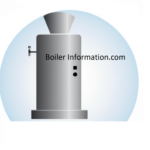A firebox is a key component of an industrial boiler. It is a chamber where the fuel is burned to generate heat, which is then transferred to water and circulated throughout the system. The firebox is typically lined with refractory material and insulation to contain the heat and protect the steel from the direct flames.
The firebox is typically the hottest part of the boiler system, reaching temperatures of up to 2,200 degrees Fahrenheit. The intense heat is necessary to turn water into steam, and it’s the steam that’s used to power the turbine that generates electricity.
To create the necessary heat, the firebox is designed to contain the fuel and provide an efficient surface for burning. The fuel is typically a type of biomass, such as wood chips, sawdust, coal, or other materials. Inside the firebox, the fuel is burned in a bed of air that is supplied to the chamber by a blower fan. This air helps to create a strong flame that is capable of reaching the necessary temperature.
The firebox also includes a refractory material that surrounds the flames and helps to contain the heat. The refractory material is a dense, heat-resistant material that is designed to withstand the intense heat of the firebox. This helps to ensure that the firebox does not overheat and that the heat is transferred to the water efficiently.
The firebox also has a number of safety features designed to protect the operators, such as an active fire protection system that alerts the operators if the firebox temperature reaches an unsafe level. This helps to ensure that the firebox is operating within safe parameters and that the boiler is running smoothly.
Overall, the firebox of an industrial boiler is a critical component that helps to generate the necessary heat for the system. By containing and burning the fuel in a controlled environment, the firebox helps to ensure that the boiler is producing the necessary steam to power the turbine and generate electricity.
